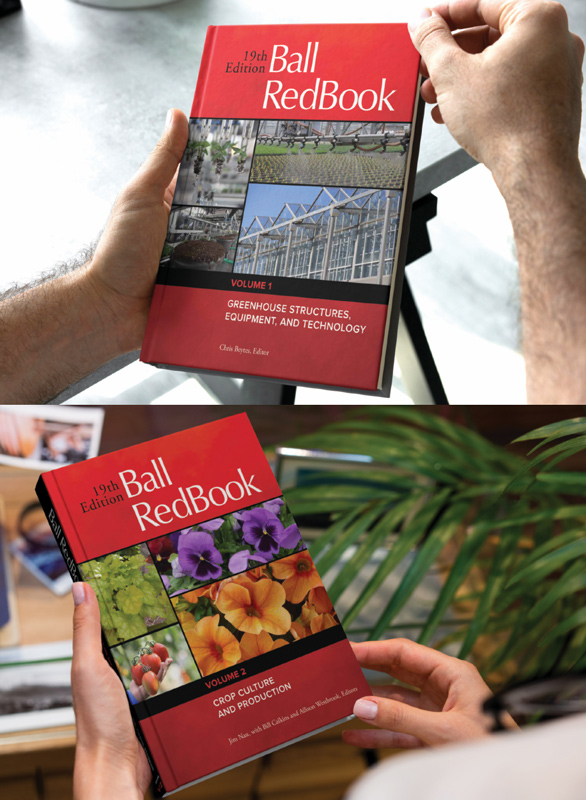6/1/2021
The New Redbooks Are Here!
Chris Beytes

What goes into updating the horticulture industry’s oldest continuously published reference book? About two years of blood, sweat and tears—and a few more gray hairs, as I can readily attest, having been editor for the 17th edition in 2003 and the 18th edition in 2011. Funny to think that I was 43 when I edited my first RedBook and I’ll be celebrating my 61st birthday just after this latest one comes out. But it’s a labor of love and I’m privileged to be a small part of the RedBook’s history.
George J. Ball, the founder of the company that bears his name, published the first Ball RedBook (then two words, “Red Book”) in 1932. It measured 4 5/8 in. wide by 6 1/8 in. tall, was 64 pages long and contained cultural information on 21 flower crops from seed, plus a bit on soil and water. George concluded the introduction of the first Red Book almost apologetically, writing, “ … since varieties and methods of management are ever-changing and improving, there should be an excuse for this little ‘Red Book.’”
Little did he know what he’d wrought—new editions came out every two to four years. The 10th edition came out in 1960, the year I was born. Each edition grew in size and scope, reaching a whopping 802 pages with the 16th edition in 1998—the last to bear George’s son Vic’s name. When it came time to do the 17th edition, I suggested we make it two volumes, separating greenhouse and equipment from the crops and culture, and that’s how it remains today.
It’s 2021: Why print a book?
Why not just put it all online, you ask? Because contrary to popular belief, print is NOT dead. Even college students, who were practically born with smartphones in their hands, tell us how much they like the feel and convenience of print books and magazines. Plus, print allows us to go into tremendous detail on each crop while giving you the ease of flipping and skimming to find exactly the info you need.
For instance, you could Google “calibrachoa deficiencies” … and you’d get 28,500 results to have to wade through. Or you can quickly flip to page 274 in Volume 2, the Calibrachoa section, then skim the subhead “Trouble-shooting” and get the expert answer you’re looking for.
And speaking of experts: For our two-volume set, we worked with 96 industry experts in academia, breeding, crop production and equipment manufacturing, each of whom lent their many, many years of experience to the project. I also have to mention the hard work of my fellow editor Jim Nau, who edited Volume 2 with the help of Bill Calkins and Allison Westbrook.
Why you need the 19th edition
Because we’ve increased the number of crops covered to over 200! Noteworthy additions include the new hybrid geraniums and begonias, Begonia boliviensis, digiplexis, the new Sunfinity-type helianthus, and an expanded section on SunPatiens and seed calibrachoa. Oh, and a massive, all-inclusive section on hemp/cannabis. As you’d expect, all the cultivar mentions and recommendations are current, as well.
That’s Volume 2, Crop Culture and Production. In Volume 1, my book, Greenhouse Structures, Equipment and Technology, I’ve added robotics, new flood floor technology like Erfgoed, LED lighting, artificial intelligence, controlled-environment agriculture facilities, and to match our cannabis culture chapter, a chapter on the cannabis greenhouse. In a nutshell, it’s the most detailed, current technology and crop production information available, all at your fingertips.
Want an individual volume or the set for yourself or your grower? You can order through our distributor, IPG Books, at www.ballredbook.com. While you’re there, check out Jim Nau’s Ball Culture Guide—The Encyclopedia of Seed Germination, now in its 4th edition. GT